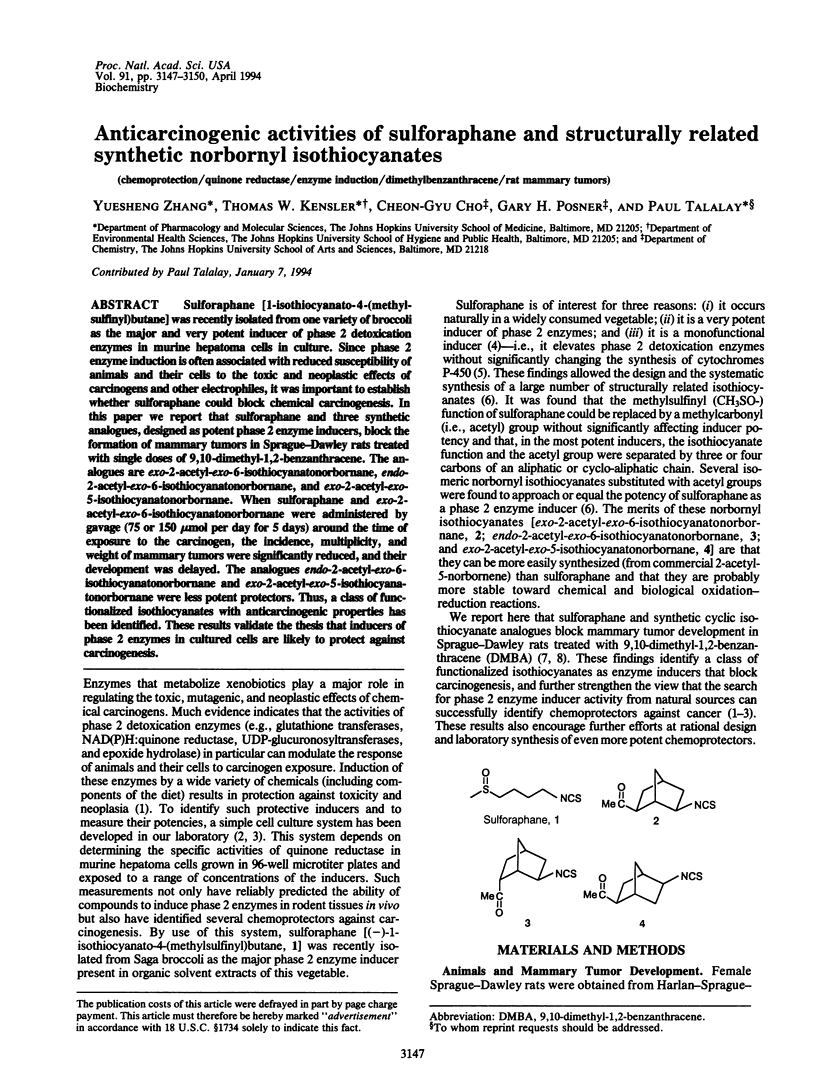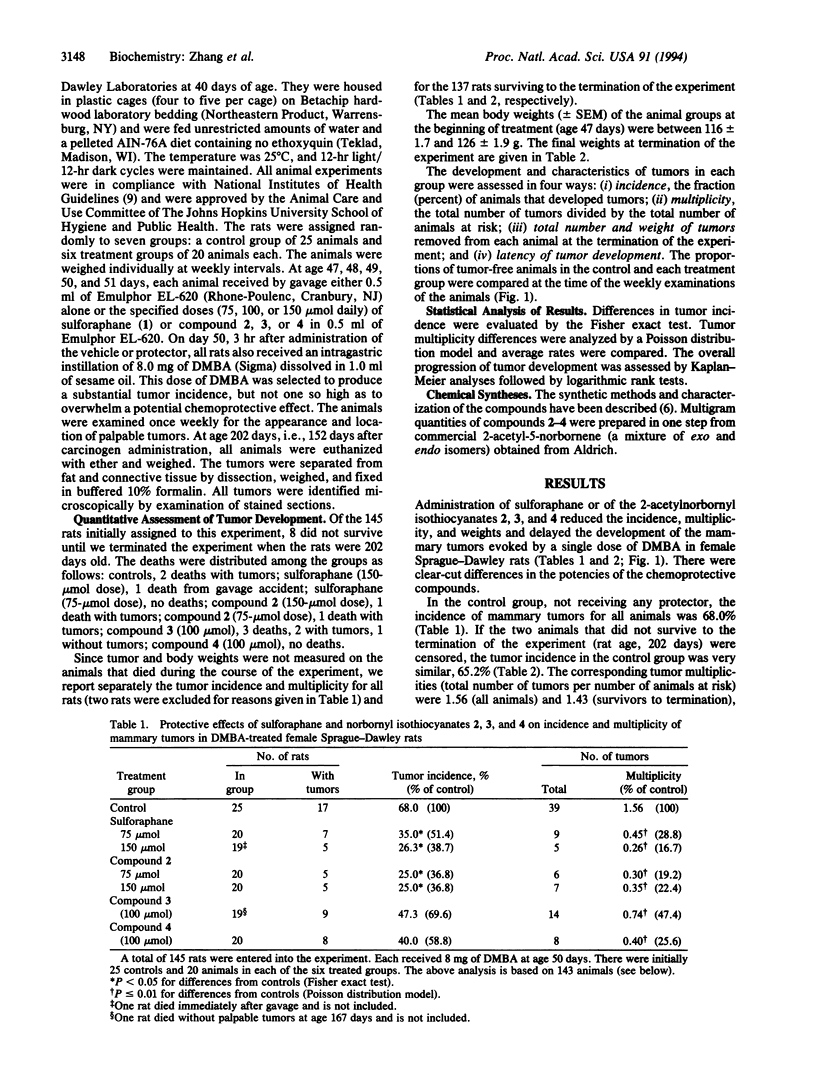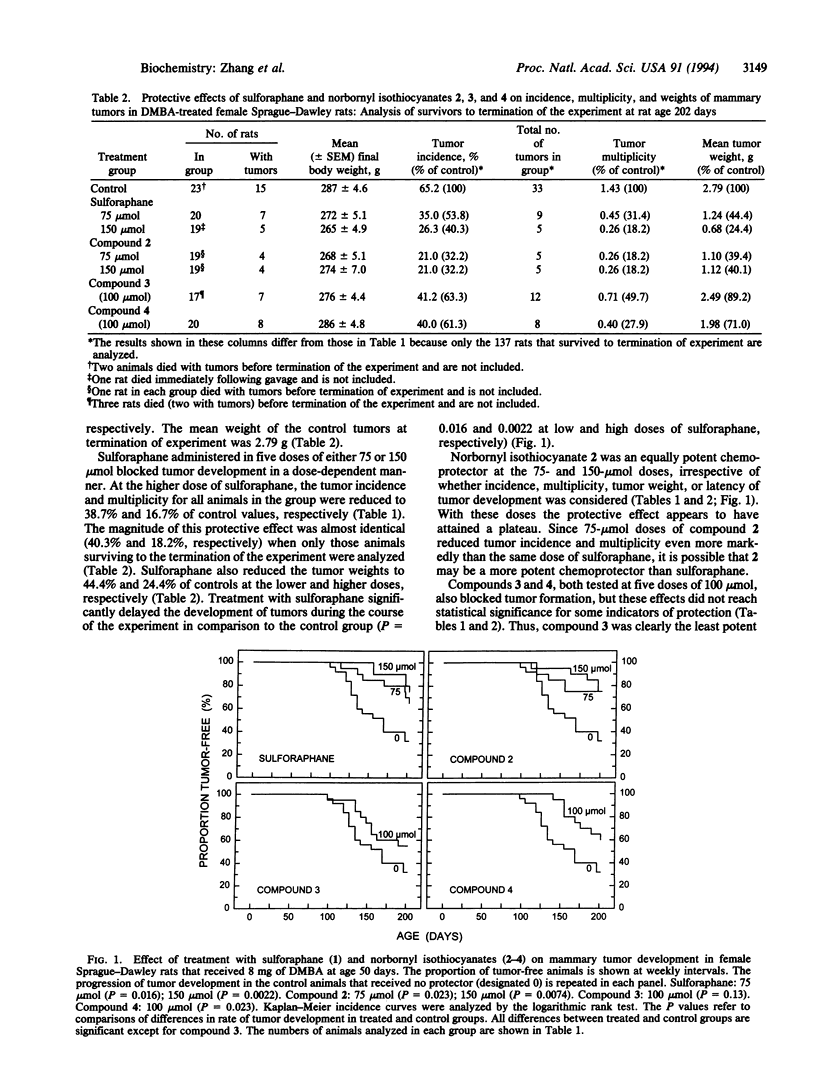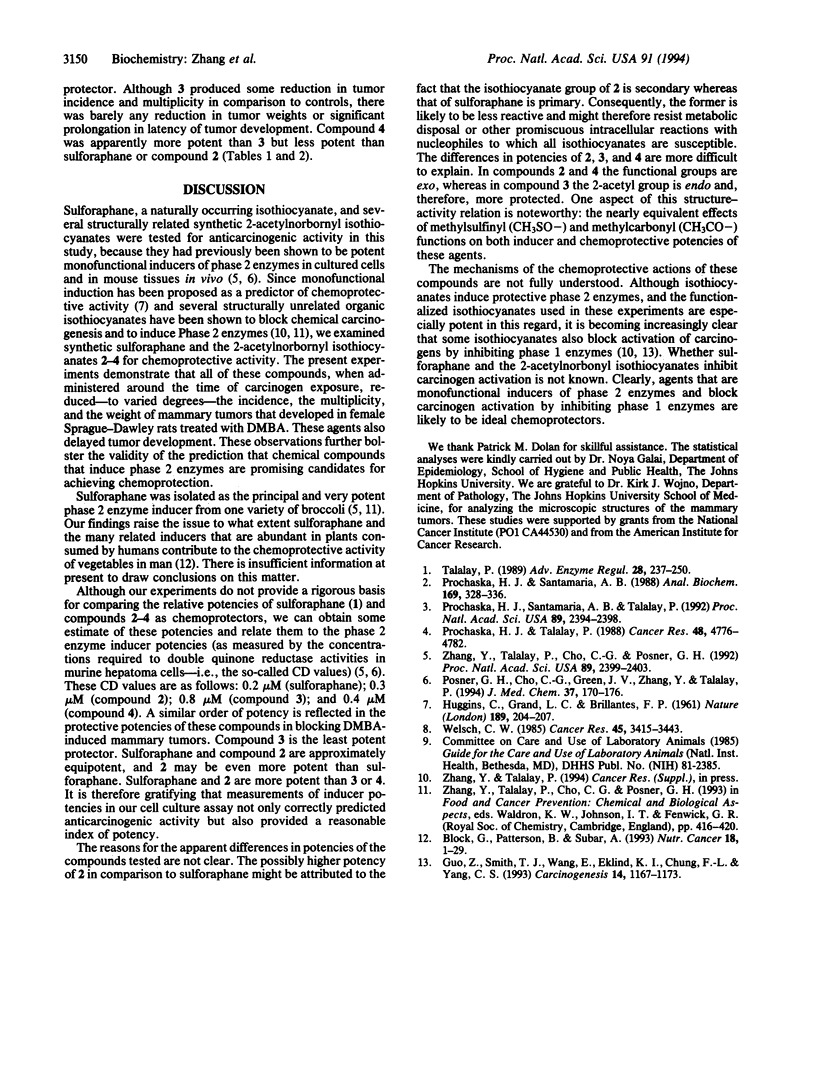Abstract
Sulforaphane [1-isothiocyanato-4-(methyl-sulfinyl)butane] was recently isolated from one variety of broccoli as the major and very potent inducer of phase 2 detoxication enzymes in murine hepatoma cells in culture. Since phase 2 enzyme induction is often associated with reduced susceptibility of animals and their cells to the toxic and neoplastic effects of carcinogens and other electrophiles, it was important to establish whether sulforaphane could block chemical carcinogenesis. In this paper we report that sulforaphane and three synthetic analogues, designed as potent phase 2 enzyme inducers, block the formation of mammary tumors in Sprague-Dawley rats treated with single doses of 9,10-dimethyl-1,2-benzanthracene. The analogues are exo-2-acetyl-exo-6-isothiocyanatonorbornane, endo-2-acetyl-exo-6-isothiocyanatonorbornane, and exo-2-acetyl-exo-5-isothiocyanatonorbornane. When sulforaphane and exo-2-acetyl-exo-6-isothiocyanatonorbornane were administered by gavage (75 or 150 mumol per day for 5 days) around the time of exposure to the carcinogen, the incidence, multiplicity, and weight of mammary tumors were significantly reduced, and their development was delayed. The analogues endo-2-acetyl-exo-6-isothiocyanatonorbornane and exo-2-acetyl-exo-5-isothiocyanatonorbornane were less potent protectors. Thus, a class of functionalized isothiocyanates with anticarcinogenic properties has been identified. These results validate the thesis that inducers of phase 2 enzymes in cultured cells are likely to protect against carcinogenesis.
Full text
PDF



Selected References
These references are in PubMed. This may not be the complete list of references from this article.
- Block G., Patterson B., Subar A. Fruit, vegetables, and cancer prevention: a review of the epidemiological evidence. Nutr Cancer. 1992;18(1):1–29. doi: 10.1080/01635589209514201. [DOI] [PubMed] [Google Scholar]
- Guo Z., Smith T. J., Wang E., Eklind K. I., Chung F. L., Yang C. S. Structure-activity relationships of arylalkyl isothiocyanates for the inhibition of 4-(methylnitrosamino)-1-(3-pyridyl)-1-butanone metabolism and the modulation of xenobiotic-metabolizing enzymes in rats and mice. Carcinogenesis. 1993 Jun;14(6):1167–1173. doi: 10.1093/carcin/14.6.1167. [DOI] [PubMed] [Google Scholar]
- HUGGINS C., GRAND L. C., BRILLANTES F. P. Mammary cancer induced by a single feeding of polymucular hydrocarbons, and its suppression. Nature. 1961 Jan 21;189:204–207. doi: 10.1038/189204a0. [DOI] [PubMed] [Google Scholar]
- Posner G. H., Cho C. G., Green J. V., Zhang Y., Talalay P. Design and synthesis of bifunctional isothiocyanate analogs of sulforaphane: correlation between structure and potency as inducers of anticarcinogenic detoxication enzymes. J Med Chem. 1994 Jan 7;37(1):170–176. doi: 10.1021/jm00027a021. [DOI] [PubMed] [Google Scholar]
- Prochaska H. J., Santamaria A. B. Direct measurement of NAD(P)H:quinone reductase from cells cultured in microtiter wells: a screening assay for anticarcinogenic enzyme inducers. Anal Biochem. 1988 Mar;169(2):328–336. doi: 10.1016/0003-2697(88)90292-8. [DOI] [PubMed] [Google Scholar]
- Prochaska H. J., Santamaria A. B., Talalay P. Rapid detection of inducers of enzymes that protect against carcinogens. Proc Natl Acad Sci U S A. 1992 Mar 15;89(6):2394–2398. doi: 10.1073/pnas.89.6.2394. [DOI] [PMC free article] [PubMed] [Google Scholar]
- Prochaska H. J., Talalay P. Regulatory mechanisms of monofunctional and bifunctional anticarcinogenic enzyme inducers in murine liver. Cancer Res. 1988 Sep 1;48(17):4776–4782. [PubMed] [Google Scholar]
- Talalay P. Mechanisms of induction of enzymes that protect against chemical carcinogenesis. Adv Enzyme Regul. 1989;28:237–250. doi: 10.1016/0065-2571(89)90074-5. [DOI] [PubMed] [Google Scholar]
- Welsch C. W. Host factors affecting the growth of carcinogen-induced rat mammary carcinomas: a review and tribute to Charles Brenton Huggins. Cancer Res. 1985 Aug;45(8):3415–3443. [PubMed] [Google Scholar]
- Zhang Y., Talalay P., Cho C. G., Posner G. H. A major inducer of anticarcinogenic protective enzymes from broccoli: isolation and elucidation of structure. Proc Natl Acad Sci U S A. 1992 Mar 15;89(6):2399–2403. doi: 10.1073/pnas.89.6.2399. [DOI] [PMC free article] [PubMed] [Google Scholar]


